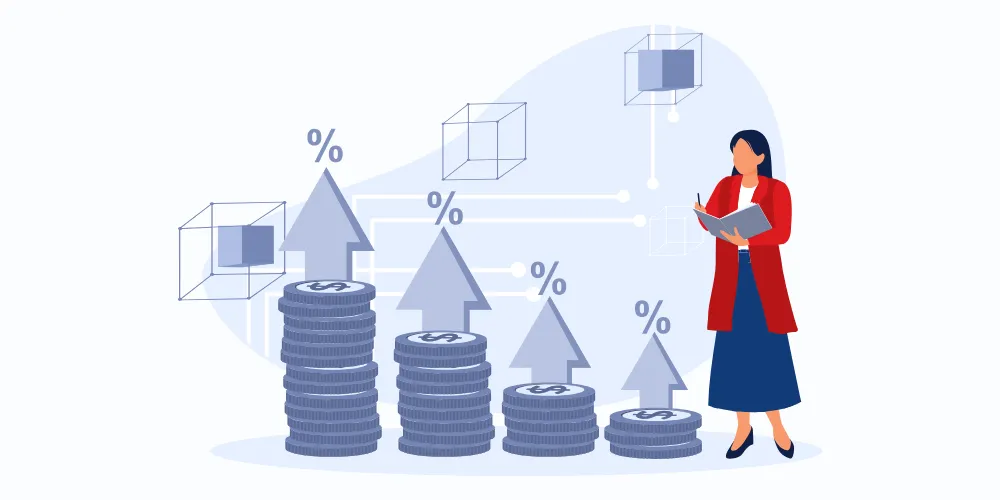Cash incentives offer immediate, tangible rewards like bonuses or commissions. Non-cash incentives include travel, gifts, or recognition programs. While cash is flexible and universally valued, non-cash rewards can be more memorable, emotionally engaging, and effective for long-term motivation and brand connection.
Cash and Non-Cash Incentives: Pros & Cons Explained
- Harshal Sonavane
- Apr 23, 2025
- 4 min read
- Last updated on Oct 30, 2025
Introduction to Incentives
Incentives have long been a cornerstone of employee motivation and performance enhancement in the workplace. By rewarding accomplishments, incentives foster a culture of achievement and dedication, encouraging employees to reach new heights. Cash and non-cash incentives stand out as predominant choices among the myriad types of incentives. Each has its unique benefits and challenges, influencing how they drive employee engagement and motivation.
Understanding Cash Incentives
A cash incentive is a financial reward that motivates employees to achieve specific goals. But what is a cash incentive in practical terms? Think of it as bonuses, commissions, or any direct monetary benefit linked to performance. It’s straightforward and impactful: an employee meets a target, and they receive a monetary reward. Knowing the meaning of a cash incentive helps in appreciating its importance in the corporate world.
Cash incentives are recognized for their clarity and directness. Bonuses and commissions are arguably the most common forms, providing direct financial gratification that employees can use as they see fit. Such incentives are not only highly visible but also deeply valued by many.
Advantages of Cash Incentives
The primary allure of cash incentives lies in their immediacy and universality. Instant gratification, such as a year-end bonus, can significantly boost an employee's morale, as it serves as tangible recognition of their efforts. Cash incentives cater to employees' wide-ranging needs and wants, offering them the freedom to spend, save, or invest their extra earnings based on personal priorities.
Moreover, the straightforward nature of a cash incentive often becomes a driving force, pushing employees to attain higher results. The promise of financial rewards can range from fulfilling pressing financial needs to indulging in desired luxuries.
Drawbacks of Cash Incentives
However, cash incentives are not without their pitfalls. While effective in the short term, they might not sustain long-term employee motivation. There's a risk that constant reliance on monetary rewards could encourage a transactional mindset, where employees work only for the pay. Furthermore, cash incentives may inadvertently lead to unhealthy competition among colleagues, sometimes prioritizing individual gains over teamwork.
Exploring Non-Cash Compensation
On the other side of the spectrum is non-cash compensation. But what is non-cash compensation? It encompasses rewards that are not monetary but still highly valued by employees, such as gift cards, travel experiences, additional vacation days, and formal recognition programs. These types of incentives often focus on emotional rewards, targeting intrinsic motivation over extrinsic gains.
Benefits of Non-Cash Compensation
Non-cash compensation offers unique benefits that cash incentives may not. It often results in greater employee satisfaction and emotional connection to the company. When employees receive personalized gifts or experiences, they feel genuinely valued and appreciated beyond just their output.
Moreover, non-cash rewards tend to foster long-term loyalty and increased engagement. When personalized and meaningful recognition resonates more deeply with individuals, it reinforces a sense of belonging and alignment with company values.
Challenges with Non-Cash Compensation
Despite their advantages, non-cash incentives come with their own challenges. Personalization is key, and it requires a deep understanding of employee preferences and motivations, which can be resource-intensive. Additionally, there's the risk that the perceived value of non-cash rewards might not resonate equally with all employees, requiring careful selection and timing.
Logistical implementation can also pose hurdles. Organizing experiences or recognizing achievements may require more planning and coordination compared to providing cash bonuses.
Cash vs. Non-Cash: When to Choose What
Deciding between cash and non-cash incentives hinges on several factors, including company culture, employee preferences, and specific goals. Cash incentives can impact immediate, quantifiable goals or where financial relief is a critical motivator. Conversely, where the goal is to build a lasting, emotionally connected, and engaged workforce, non-cash compensation might be more effective in creating lasting impressions.
Conclusion: Crafting a Balanced Incentive Strategy
Incentives are most effective when strategically aligned with organizational objectives and employee expectations. A carefully crafted incentive strategy might integrate both cash and non-cash elements, offering immediate rewards while fostering long-term engagement and loyalty. By understanding the workforce's diverse needs, organizations can design incentive systems that resonate on multiple levels, driving performance and satisfaction across the board.
Frequently Asked Questions
What are the key differences between cash and non-cash incentives?
When should you choose non-cash incentives over cash?
Non-cash incentives work well for team building, recognition, and driving engagement in longer-term programs. They're ideal for creating a lasting impact or distinguishing from salary-based rewards. They’re also useful for fostering loyalty and emotional connection beyond financial gain.
Are cash incentives always the most effective?
Not necessarily. While cash is easy to understand and universally appreciated, it may be quickly spent and forgotten. Non-cash incentives can offer lasting value and emotional impact. A balanced approach, aligned with your workforce and goals, often yields the best motivational outcomes.
How do you measure the impact of non-cash incentives?
Track key performance indicators (KPIs) such as productivity, engagement scores, program participation, and retention rates. Surveys and feedback also help gauge emotional resonance. Over time, measure how non-cash incentives influence culture, morale, and long-term performance compared to cash-based rewards.




